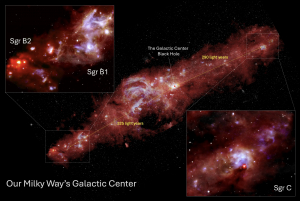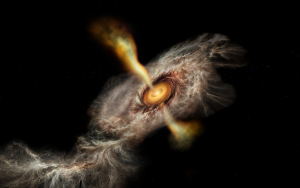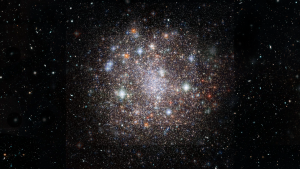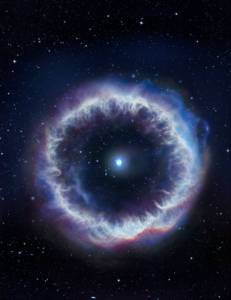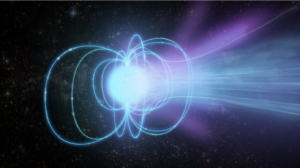An international team, led by astronomers from the Indian Institute of Space Science and Technology (IIST) and the Indian Institute of Science (IISc), has for the first time detected circular polarization in radio emission originating from a massive protostar, IRAS 18162-2048—unveiling fresh clues about the cosmic forces shaping our universe.
Unusual stellar nurseries near our galaxy’s center puzzle scientists
New research led by Dr. James De Buizer at the SETI Institute and Dr. Wanggi Lim at IPAC at Caltech revealed surprising results about the rate at which high-mass stars form in the galactic center of the Milky Way.
Unveiling the Birth Secrets of Massive Stars with the NSF NRAO Very Large Array
By observing the young star HW2 in Cepheus A, located 2300 light years from Earth, researchers have resolved the structure and dynamics of an accretion disk feeding material to this massive star. This finding sheds light on a central question in astrophysics: how do massive stars, which often end their lives as supernovae, accumulate their immense mass?
Young Stars in the Milky Way’s Backyard Challenge Our Understanding of How They Form
Astronomers have made groundbreaking discoveries about young star formation in the Large Magellanic Cloud (LMC), using the James Webb…
Plasma Bubbles and the “Engine” of Fast Radio Bursts
An international team of astronomers has demonstrated that this persistent radiation originates from a plasma bubble, shedding new light on the enigmatic sources powering these cosmic phenomena.
Precision Measurements Offer Clues to Magnetar’s Cosmic Origin
An international team of astronomers have used a powerful array of radio telescopes to discover new insights about a magnetar that’s only a few hundred years old. By capturing precise measurements of the magnetar’s position and velocity, new clues emerge regarding its developmental path.







